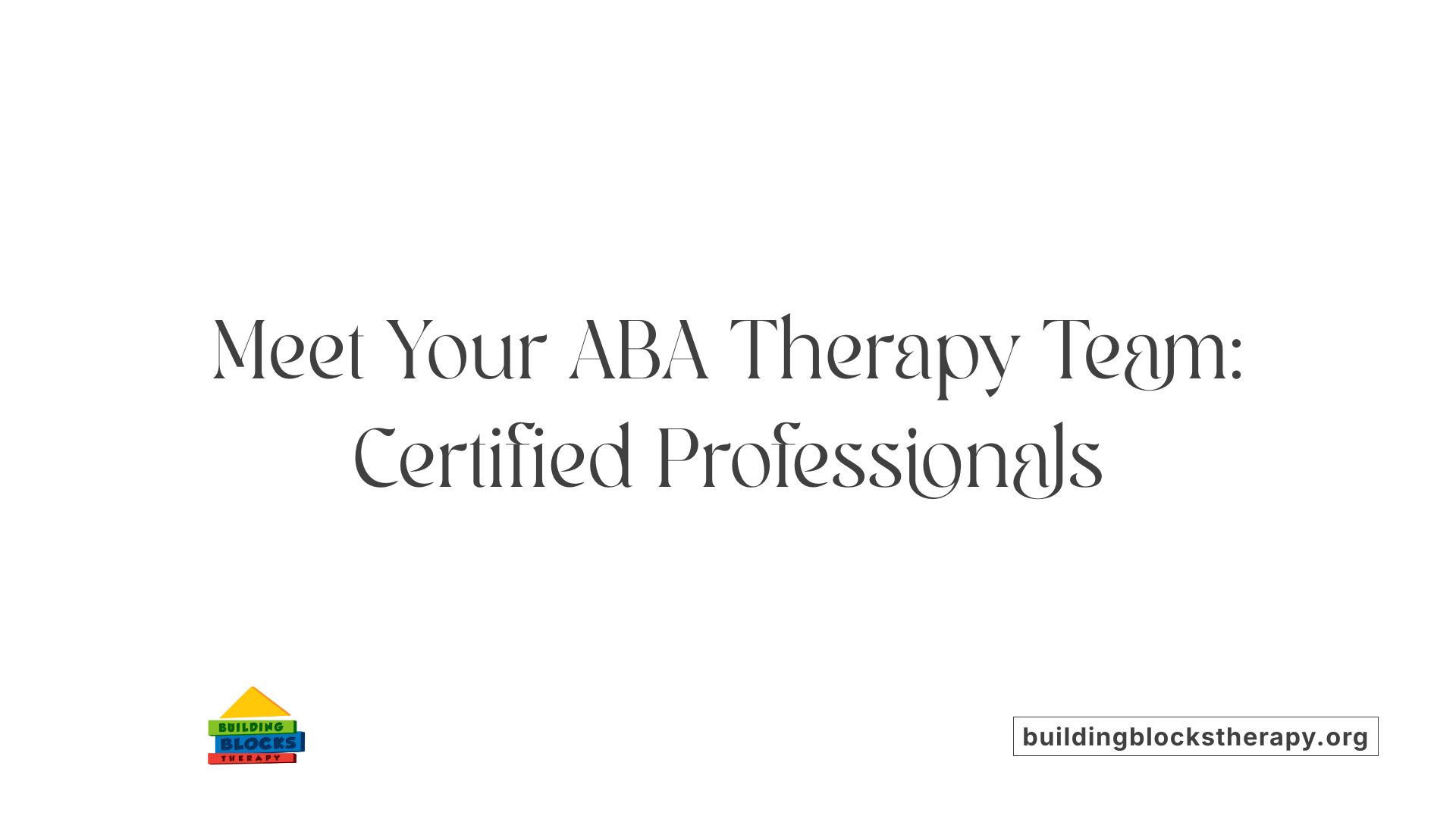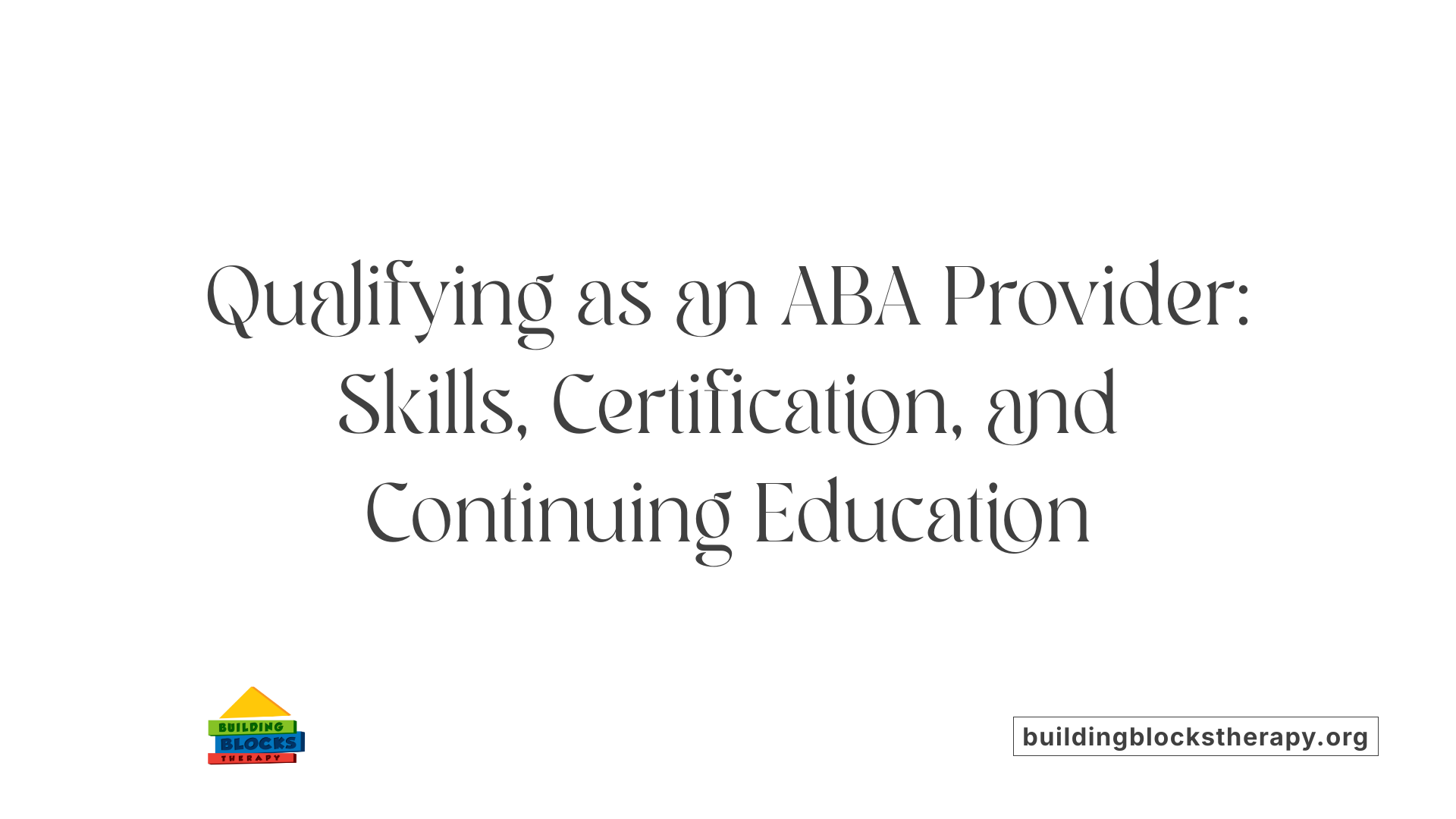How ABA Therapy Helps Children with Autism Build Conflict Resolution Skills
Building Bridges: The Role of ABA Therapy in Developing Conflict Resolution Skills for Children with Autism

Understanding ABA Therapy and Its Importance in Autism Support
Applied Behavior Analysis (ABA) therapy is a scientifically validated approach widely recognized as a leading treatment for autism spectrum disorder (ASD). By focusing on behavior modification through evidence-based techniques, ABA supports children with autism in acquiring essential social competencies, including conflict resolution skills. This article delves into how ABA therapy is uniquely equipped to guide children with autism in navigating social challenges and resolving conflicts, fostering their ability to interact confidently and harmoniously with others.
What Is Applied Behavior Analysis (ABA) Therapy?

What is Applied Behavior Analysis (ABA) therapy?
Applied Behavior Analysis (ABA) therapy is an evidence-based approach to understanding and changing behavior. Rooted in the science of learning and behavior, ABA is commonly used to support individuals with autism spectrum disorder (ASD) and other developmental conditions. It focuses on increasing positive behaviors and reducing challenging ones through systematic techniques.
Core principles of ABA
ABA is built on analyzing the relationship between behavior and its environment using an Antecedent-Behavior-Consequence (ABC) framework. The therapy emphasizes positive reinforcement—rewarding good behavior to encourage its recurrence. Individualized treatment plans are developed following thorough assessment by qualified professionals like Board Certified Behavior Analysts (BCBAs).
Techniques used in ABA
Some common techniques include:
- Positive reinforcement: Tailored rewards motivate desired social behaviors.
- Prompting and fading: Guides are initially provided to assist learning, then gradually removed.
- Naturalistic teaching: Embeds learning opportunities into everyday activities to promote real-life skill use. Models such as Pivotal Response Treatment (PRT) and the Early Start Denver Model (ESDM) combine play-based activities with structured teaching to enhance engagement and learning.
Individualized treatment plans and assessment process
ABA therapy starts with a detailed assessment to identify strengths and areas needing support. Based on these insights, specific goals are set, and a customized intervention plan is created. Throughout therapy, data are collected to monitor progress and adjust strategies effectively.
Role of behavior analysts
Behavior analysts design, supervise, and modify the treatment plans. Their expertise ensures interventions are ethical, personalized, and grounded in scientific research. They also train caregivers to implement strategies consistently, enhancing skill generalization beyond therapy sessions.
Benefits of ABA Therapy for Children with Autism

How does ABA therapy benefit individuals with autism?
ABA therapy benefits individuals with autism by systematically teaching and reinforcing positive behaviors while reducing harmful or interfering behaviors. This leads to significant improvements in communication, social skills, and daily living abilities. Using scientifically based principles, such as positive reinforcement and prompting, ABA tailors interventions to each child's unique needs through ongoing data collection and behavioral assessments.
Improvements in communication and social skills
One of the core strengths of ABA therapy is enhancing both verbal and non-verbal communication. Children learn essential social skills, including making eye contact, greeting others, and engaging in peer interactions, through techniques like modeling, role-playing, and naturalistic teaching. These strategies help children generalize skills across various settings and social situations, promoting better social engagement and relationships.
Reduction in harmful behaviors
ABA uses positive reinforcement and carefully designed interventions to decrease problem behaviors that can interfere with learning and socialization. By breaking down behaviors into manageable steps and reinforcing desired responses, children experience fewer behavioral challenges, enabling them to participate more fully in family, school, and community activities.
Development of daily living skills
Beyond social skills, ABA supports the acquisition of self-care and life skills such as dressing, eating, and personal hygiene. These gains foster greater independence and enable children to better manage routines and transitions in their daily life.
Promotion of independence and self-advocacy
ABA therapy empowers children with autism by cultivating skills that encourage self-help and confidence. Through consistent practice and reinforcement, children learn to navigate social environments independently and advocate for their needs, increasing their overall quality of life.
Scientific validation and research evidence
ABA is recognized as a gold-standard, evidence-based intervention for autism spectrum disorder. Research shows that early and intensive ABA programs, particularly those started before age four with more than 20 hours per week, result in substantial developmental improvements. These include enhanced communication, social, and adaptive behaviors that often reduce the need for additional support services later in life.
| Benefit Area | Examples of Skills Developed | ABA Techniques Used |
|---|---|---|
| Communication & Social Skills | Eye contact, greetings, peer play | Modeling, role-playing, naturalistic teaching |
| Behavior Reduction | Decreasing tantrums or aggression | Positive reinforcement, prompting, shaping |
| Daily Living Skills | Dressing, eating, hygiene | Task analysis, reinforcement |
| Independence & Self-Advocacy | Self-help, navigating social settings | Reinforcement, fading, generalization |
| Scientific Validation | Developmental gains, reduced services | Data-driven interventions, early start treatment |
Who Provides ABA Therapy? The Role of Certified Professionals

Who typically provides ABA therapy services?
ABA therapy is delivered by trained and qualified professionals who specialize in behavior analysis and developmental support. The most recognized credential holders are Board Certified Behavior Analysts (BCBAs), who undergo rigorous training and certification to design and oversee individualized treatment plans for children with autism and other developmental disorders.
Qualifications of ABA therapists
Beyond BCBAs, ABA services may also be provided by licensed therapists and interventionists who have received specialized training in behavioral analysis. These professionals employ various ABA methodologies and techniques, ensuring that therapy is effective and tailored to the child's unique needs.
Settings where ABA is delivered
ABA therapy is versatile and can be implemented in a range of environments, including homes, clinics, schools, and community settings. This flexibility supports naturalistic teaching and promotes generalization of social and communication skills across contexts.
Collaboration with families
Family involvement is a crucial component of successful ABA interventions. Providers collaborate closely with parents and caregivers, offering strategies that can be incorporated at home to reinforce learning and promote independence.
Insurance and access
Access to ABA therapy is increasingly supported by insurance plans such as Blue Cross Blue Shield, Cigna, and Medicaid. These coverage options help families obtain essential services delivered by certified professionals.
Board Certified Behavior Analyst (BCBA) credential
The BCBA credential represents the gold standard in ABA therapy provision. BCBAs conduct initial assessments, design goal-oriented intervention plans, supervise therapy implementation, and ensure data-driven adjustments for optimal outcomes.
| Aspect | Details | Importance |
|---|---|---|
| Providers | BCBAs, licensed therapists, interventionists | Ensures qualified delivery of ABA services |
| Settings | Homes, clinics, schools, community environments | Supports learning in naturalistic and structured settings |
| Family Collaboration | Involvement in intervention planning and home practice | Enhances generalization and maintenance of skills |
| Insurance | Coverage by plans like Blue Cross Blue Shield, Cigna, Medicaid | Improves access and affordability |
| BCBA Credential | Certified professionals who oversee treatment | Ensures evidence-based, individualized, and supervised therapy |
Essential Qualifications for ABA Therapy Providers

What qualifications should professionals providing ABA therapy have?
Professionals delivering ABA therapy typically hold at least a bachelor’s degree in psychology, education, or related fields. Many advance their expertise by earning a master’s degree in Applied Behavior Analysis or a closely related discipline. One of the foundational credentials is becoming a Board Certified Behavior Analyst (BCBA), granted by the Behavior Analyst Certification Board (BACB).
What is the certification process for BCBAs?
The BCBA certification involves a multi-step process:
- Completion of specialized graduate-level coursework in behavior analysis.
- Accumulation of supervised practical experience working directly with clients.
- Passing a rigorous certification examination.
This certification ensures that therapists meet established standards for delivering effective and ethical ABA interventions.
What skills are needed beyond certification?
Alongside formal education and certification, ABA therapists must develop specific interpersonal and professional skills:
- Competence in data collection and analysis to track client progress.
- Strong communication skills for collaborating with clients, families, and interdisciplinary teams.
- Patience and empathy to effectively support individuals with developmental challenges.
- Commitment to high ethical standards and confidentiality.
Why is continuing education and specialized experience important?
Maintaining BCBA certification requires ongoing continuing education to stay abreast of innovations and evidence-based practices in ABA therapy. Additionally, gaining specialized experience by working with individuals on the autism spectrum or other developmental disabilities enhances an ABA therapist’s ability to design customized and effective intervention plans.
| Qualification Area | Description | Importance |
|---|---|---|
| Educational Background | Bachelor’s or Master's degree in psychology, education, or applied behavior analysis | Provides foundational knowledge necessary for behavior analysis and therapy practices |
| Certification (BCBA) | Completion of BACB-approved coursework, supervised experience, and passing a certification exam | Ensures therapists meet professional and ethical standards for ABA interventions |
| Skills Beyond Certification | Data analysis, communication, empathy, patience, and ethics | Critical for effective intervention delivery and family collaboration |
| Continuing Education & Experience | Ongoing learning and experience with ASD and developmental disorders | Keeps therapists current with best practices and enhances client-specific treatment quality |
ABA Techniques That Foster Social Skills Development
How Does ABA Use Task Analysis to Teach Social Skills?
ABA therapy breaks down complex social skills into smaller, manageable steps through task analysis. For example, social interactions are segmented into tasks like making eye contact, smiling, saying "hello," and waiting for a response. This method allows children to master each skill individually, building a strong foundation for effective communication.
What Role Does Positive Reinforcement Play?
Positive reinforcement is central to encouraging desired social behaviors in ABA. Reinforcers, such as praise or rewards, are carefully tailored based on individual preferences to maximize motivation. This personalized approach helps children stay engaged and more readily adopt new social behaviors.
How Are Modeling and Role-Playing Used?
Modeling and role-playing serve as practical tools within ABA to demonstrate and practice social skills. In controlled, supportive settings, therapists or parents model appropriate behaviors which children then imitate, providing a safe space to rehearse social interactions before applying them in real life.
What Are Naturalistic Teaching Strategies and Their Benefits?
Naturalistic teaching strategies integrate social skill instruction into everyday activities rather than isolated sessions. By embedding learning in real-world contexts, ABA promotes generalization, meaning children are better able to apply their social skills across different settings and with various people.
How Is Social Skills Training Incorporated Within ABA?
Social skills training is a key component of comprehensive ABA programs. Behavior analysts focus on reinforcing communication, emotional regulation, friendship-building, and conflict resolution. These efforts help children with autism navigate social environments more confidently and build lasting relationships.
Conflict Resolution Skills Within ABA Social Skills Training
What Are the Objectives of Social Skills Therapy Including Conflict Resolution?
Social skills therapy within ABA aims to enhance children's abilities in communication, emotional regulation, building friendships, and crucially, conflict resolution. This part of therapy supports children in navigating social challenges confidently and effectively, addressing not only verbal exchanges but also nonverbal cues.
How Are Verbal and Nonverbal Communication Taught for Conflict Situations?
ABA breaks down the communication skills needed for conflict resolution into manageable steps. Children learn to recognize and use appropriate verbal phrases such as "I feel" statements or polite requests, alongside nonverbal signals like eye contact, facial expressions, and body language. These skills are taught through task analysis where each aspect is practiced separately before combining them for real-life situations.
What Strategies Promote Emotional Regulation?
Emotional regulation is vital in managing conflicts. ABA uses prompting and positive reinforcement to teach children to identify their emotions and use calming strategies when feeling upset. Reinforcers are personalized, encouraging children to use coping skills like deep breathing or taking a break, helping prevent escalation during disagreements.
How Are Role-Playing and Modeling Used in Conflict Scenarios?
ABA employs modeling and role-playing as primary techniques to demonstrate and practice conflict situations in controlled settings. Children observe appropriate interactions and are then guided through role-play exercises where they can rehearse handling disagreements, practicing responses, and receiving immediate feedback. This hands-on approach promotes confidence and skill retention.
How Does ABA Help Children Navigate Disagreements with Peers?
Naturalistic teaching strategies embed conflict resolution into everyday activities and peer interactions, encouraging children to generalize skills across environments. Therapists and parents work collaboratively to reinforce positive social behaviors and guide children through real peer conflicts, enabling them to apply learned strategies effectively and maintain positive relationships.
Generalization and Maintenance: Ensuring Conflict Resolution Skills Stick
What Are Generalization and Maintenance, and Why Do They Matter?
Generalization refers to the ability of children to apply learned conflict resolution skills across different environments, situations, and social partners. Maintenance ensures these skills are retained and used over time. Both are critical because learning a skill in one setting, like a therapy room, doesn’t guarantee it will be used at school, home, or with friends.
How Can Conflict Resolution Skills Be Embedded into Daily Life?
To promote generalization, ABA therapy incorporates conflict resolution skills into everyday activities. This means teaching children to practice handling disagreements during regular routines, such as sharing toys or waiting turns, so the skills become part of their natural behavior.
What Role Does Natural Environment Teaching Play in Real-World Application?
Natural environment teaching (NET) is a strategy where instruction takes place in the child’s typical settings and involves real-life interactions. For conflict resolution, this could involve role-playing difficult social situations during playtime or family gatherings, allowing children to practice and receive feedback in relevant contexts.
Why Is Continued Reinforcement and Monitoring Important?
Maintaining conflict resolution skills requires ongoing reinforcement, such as praise or rewards, tailored to the child's preferences. Behavior analysts regularly monitor progress through data collection to adjust interventions, ensuring the child continues using these skills effectively and independently.
How Does Family Involvement Support Skill Use Across Settings?
Family members play a vital role in supporting generalization and maintenance by practicing conflict resolution strategies at home and other settings. Training families on techniques used during therapy empowers them to reinforce skills consistently, creating a cohesive and supportive environment.
| Aspect | Description | Practical Example |
|---|---|---|
| Generalization | Applying skills across varied environments and people | Using conflict resolution at both school and home |
| Maintenance | Sustaining skill use over time | Continuing to use calming strategies months after intervention |
| Natural Environment Teaching | Learning skills during natural activities and settings | Role-playing social conflicts during playdates |
| Reinforcement & Monitoring | Ongoing encouragement and data-driven adjustments | Rewarding peaceful conflict solutions and reviewing behavior charts |
| Family Involvement | Active participation of caregivers in reinforcing skills across contexts | Parents practicing problem-solving techniques at home |
Starting Early: The Impact of Early ABA Intervention on Social Competency
Benefits of Early ABA Intervention Before Age 4
Starting applied behavior analysis (ABA) therapy before the age of four significantly boosts the developmental prospects of children with autism. Early intervention capitalizes on the brain's heightened adaptability at this stage, making it easier to teach new social skills and reduce problem behaviors. Research highlights that children who begin ABA therapy early show notable improvements in social communication and overall engagement.
Intensive Therapy Schedules and Developmental Gains
Effective ABA programs often involve intensive schedules, usually exceeding 20 hours per week. This intensive approach leads to larger developmental gains, as frequent and consistent sessions reinforce learning and help children master complex social skills such as making eye contact, greeting, and waiting for responses. Techniques like positive reinforcement, prompting, shaping, and naturalistic teaching strategies are embedded throughout these sessions.
Long-term Advantages in Social Interaction and Conflict Management
Early ABA therapy not only improves initial social skills but also lays the groundwork for advanced social competencies. Children develop better emotional regulation, build friendships more easily, and learn conflict resolution strategies more effectively. Modeling, role-playing, and task analysis support the gradual acquisition and maintenance of these social behaviors.
Reducing the Need for Additional Services
Starting ABA therapy early can reduce the child's later need for extensive services. By establishing foundational skills early on, children often experience fewer behavioral challenges, mitigating the need for extra interventions. The therapy’s focus on generalization ensures that learned skills transfer across different settings and people, making social interactions smoother and more natural.
Setting a Foundation for Lifelong Skills
Early ABA intervention equips children with essential social and life skills, promoting independence and self-help abilities. Personalized treatment plans developed by Board Certified Behavior Analysts ensure that therapy addresses each child's unique needs, empowering families through involvement and tailored strategies. This strong foundation supports continued growth and success beyond childhood.
Family and Caregiver Roles in Supporting ABA Therapy Outcomes
Why is family involvement important in ABA therapy?
Family involvement is crucial for maximizing the effectiveness of ABA therapy. Engaging parents and caregivers helps ensure consistency in applying strategies, reinforcing skills learned during therapy, and generalizing behaviors across home and community settings. When families actively participate, children benefit from increased practice opportunities and emotional support, which facilitate faster and more sustained progress.
How do parent-implemented intervention strategies work?
Parent-implemented intervention empowers caregivers to become active partners in therapy. Parents are trained to use ABA techniques such as positive reinforcement, prompting, and modeling during everyday interactions. This approach allows social skills and behavioral goals to be supported throughout the day, not just during formal therapy sessions. For example, a parent might use prompting and praise to encourage their child to greet family members or practice communication skills during play.
How are caregivers trained to reinforce conflict resolution skills at home?
Training caregivers in conflict resolution involves teaching them to recognize social cues, prompt appropriate responses, and reinforce positive behavior when conflicts are managed well. Therapists model effective conflict resolution techniques and provide caregivers with strategies to practice with their child at home. This collaborative training helps children develop emotional regulation and problem-solving skills in real-life situations.
What ethical practices emphasize collaborative care?
Ethical ABA practices highlight transparent communication and respectful partnerships between therapists and families. Individualized treatment plans are developed collaboratively, considering family values and preferences to ensure culturally sensitive care. Professionals advocate for ongoing family education and support, fostering trust and shared goals for the child’s development.
What strategies empower parents and caregivers?
Empowerment strategies include comprehensive training sessions, providing clear guidance on behavior management, and encouraging caregivers to track progress through data collection. Access to resources and support groups allows families to feel confident in their role, reduces caregiver stress, and enhances their capacity to maintain gains beyond therapy.
Inclusive Benefits: How ABA Techniques Extend Beyond Autism
ABA Applications for Other Developmental Disorders
Applied Behavior Analysis (ABA) is widely recognized for its effectiveness with autism spectrum disorder (ASD), but its principles and techniques extend to other developmental conditions such as ADHD, anxiety, PTSD, Oppositional Defiant Disorder, OCD, Panic Disorder, and Traumatic Brain Injury. These applications demonstrate ABA's flexibility and potential to address a range of behavioral and developmental challenges by focusing on positive reinforcement and individualized intervention.
Use of Behavioral Analysis in Classroom and Community Settings
Beyond clinical settings, ABA strategies are used effectively for classroom management, helping teachers to promote positive behaviors, increase engagement, and reduce disruptions among both neurodiverse and neurotypical children. These behavioral approaches foster more structured and supportive learning environments and can be adapted to various community settings, enhancing social interactions and cooperation.
Teaching Social and Conflict Resolution Skills to Neurotypical Children
Social skills therapy, a specialized extension of ABA, focuses on improving verbal and non-verbal communication, emotional regulation, friendship building, and conflict resolution. These therapeutic techniques are not limited to children with autism but also benefit neurotypical children to navigate social complexities, fostering empathy, cooperation, and peaceful conflict management.
Broader Impact of ABA Principles on Behavioral Management
ABA's emphasis on reinforcement techniques such as praising desired behaviors and using rewards promotes not only individual behavioral change but also encourages positive group dynamics. These principles enhance self-regulation and accountability in diverse populations, supporting overall behavioral health and wellness.
Potential to Enhance Social Harmony Universally
By teaching foundational social skills and emotional self-regulation, ABA approaches contribute to a more harmonious social environment across various populations. Whether in schools, homes, or community groups, ABA techniques help individuals build stronger relationships and foster inclusive, respectful interactions—benefits that resonate universally across developmental and social spectrums.
Empowering Children with Autism to Resolve Conflicts Through ABA Therapy
ABA therapy serves as a transformative tool for children with autism, equipping them with the vital social and conflict resolution skills necessary to confidently navigate interpersonal challenges. By employing personalized, evidence-based strategies like positive reinforcement, task analysis, and naturalistic teaching, ABA supports children in learning not only how to communicate effectively but also how to regulate emotions and resolve conflicts constructively. Early and intensive intervention delivered by qualified professionals, along with active family involvement, ensures these skills are generalized and maintained across various settings, laying the groundwork for increased independence and social integration. Ultimately, ABA therapy helps bridge social gaps, fostering more harmonious relationships and empowering children with autism to build meaningful, lasting connections.
References
- Using ABA to Improve Social Skills in Children with Autism
- The Role of ABA Therapy in Empowering Autistic Children ...
- Is ABA Therapy Only for Autism?
- The Importance of Social Skills Therapy in Autism
- Applied Behavior Analysis (ABA)
- A Comprehensive Guide to ABA Therapist Requirements
- How to Become an Applied Behavior Analyst (ABA) Therapist






